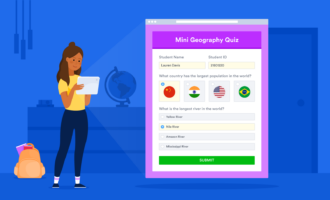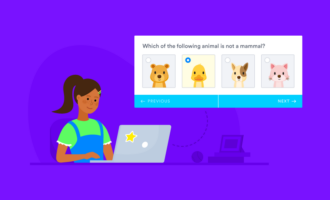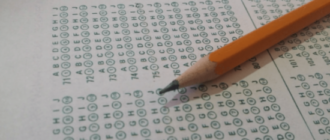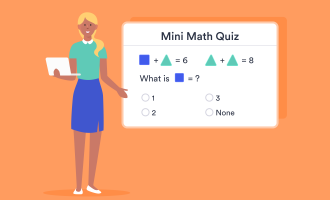Every teacher knows that a student’s intelligence isn’t a terribly accurate predictor of academic performance.
In fact, how much effort a student is willing to put forward is every bit as reliable at predicting academic performance, says Arthur Poropat, Ph.D., psychology lecturer in the School of Applied Psychology at Griffith University in Australia. And willingness to expend effort is a personality trait — i.e., something that can be measured.
Student personalities, then, should factor into the design of a class curriculum. But how do you measure students’ personalities and gather that data?
One of the best ways to do this is to administer personality quizzes at the beginning of the school year. A word of caution, however, from Amy Leask at Enable Education: Personality quizzes are not comprehensive assessments. They cannot tell you everything you need to know about someone’s personality.
They are, however, a great starting point for understanding what a student is interested in and how that student likes to learn.
Why you should create a personality quiz from scratch
There are multitudes of predesigned personality tests out there, and each takes a different approach to analyzing people. But before you choose one of them for your students, be warned that the jury is still out on how reliable these tests are. Oxford University professor Merve Emre, Ph.D., author of The Personality Brokers, suggests they are all imperfect tools that should be taken with at least a grain of salt.
Psychosocial rehabilitation specialist Kendra Cherry warns that self-reported personality quizzes can offer skewed results. If students know you’re assessing them, they might try to give what they think is a “correct” answer rather than an honest one.
Caveats aside, personality quizzes can provide insights that your own classroom observations may not reveal. To reliably glean those insights, however, it may be in your best interest to design your own personality quiz. This helps ensure the data you collect is relevant and usable in your lesson planning.
Creating a personality quiz isn’t difficult. You just need to keep a few points in mind as you piece it together.
Define what you want to measure
The first step in designing the quiz is to define what you want to know about your students. Are you trying to assess learning styles? Do you want to know whether students are introverts or extroverts? Do you want to gauge their affinity for a given subject?
Whatever it is you want to know, make sure it is clearly defined before you begin writing questions.
Choose your questions carefully
You want the quiz to be fun for the students and relatively short so they stay engaged. The optimal length seems to be between seven and 10 questions.
- Storytelling platform Playbuzz recommends eight to 10 questions for optimal engagement with the quiz.
- Doug Villhard, cofounder and president of audience engagement company Second Street, recommends seven questions. He says the first three questions are the most important for grabbing attention.
With so few questions, you don’t have the opportunity to deep-dive into personality. This is why it is so crucial to define what you want to know. And when possible, make the questions fun, Villhard says. Your students will give you their best when they are entertained and engaged.
Keep it digital
Don’t make things more difficult for yourself by administering a paper-and-pencil quiz (you will be left manually compiling responses by hand). Instead, create a digital quiz that will collect the data for you. This will make it easier for you to extract and analyze data.

Translate personality quiz results into lesson plans
Plan to have students take the personality quiz on or around the first day of class. When you know their personalities from the start, music teacher Ed Pearlman says, you can plan your teaching approach at the beginning rather than trying to “reinvent the wheel with each student” along the way.
Jen Lilienstein, author of A Parent’s Playbook for Learning, explains how the information can be used in the classroom:
- Talk to students about the subjects they say they are interested in. This is a wonderful opportunity to form stronger teacher-student relationships.
- Design class discussions in ways that allow both introverts and extroverts to participate in the conversation.
- Help students stay on task and organized by playing to their strengths.
- Devise a curriculum that engages the entire class based on your understanding of their personalities.
In Colorado, the Douglas County School District experimented with a district-wide personality quiz to learn more about student personalities. Based on their answers, students were given a color-coded profile that alerted educators to their personality type.
Kathy Reoh, a fourth-grade teacher at Summit View Elementary, said she used the profiles to guide her approach to teaching in a way that recognizes students’ thinking styles. The data helps her reach her students. “This is who the kids really are,” Reoh told The Denver Post.
That’s the real point of personality tests. These simple tools give teachers a better glimpse into who their students are as people. That information can then be used to structure a curriculum and guide teaching approaches. For both teachers and students, this can make for a happier, more productive classroom.











Send Comment: